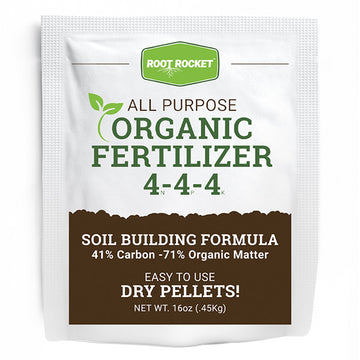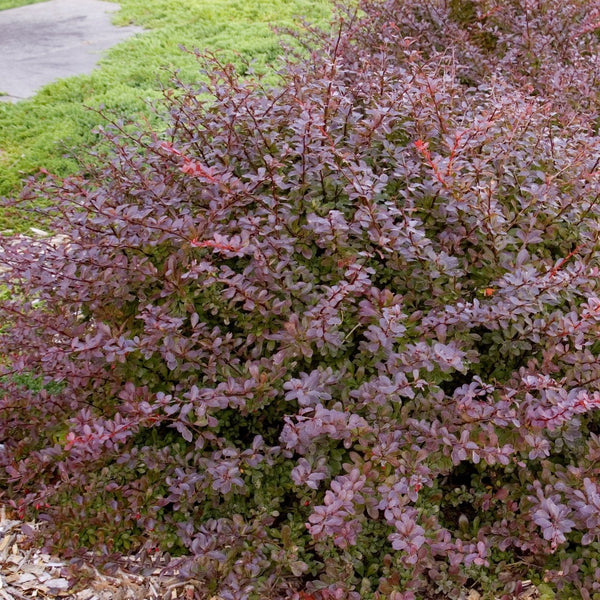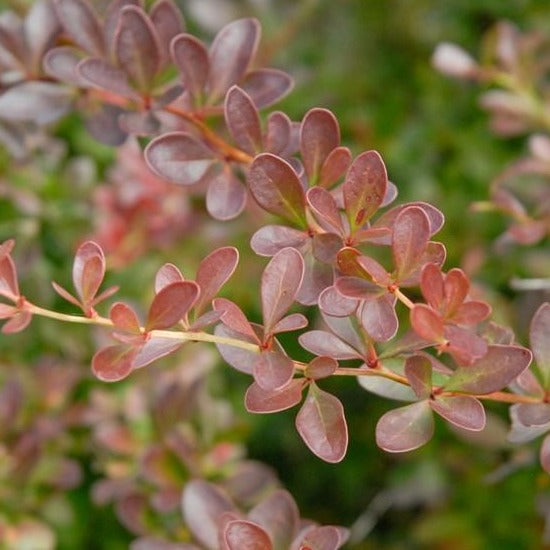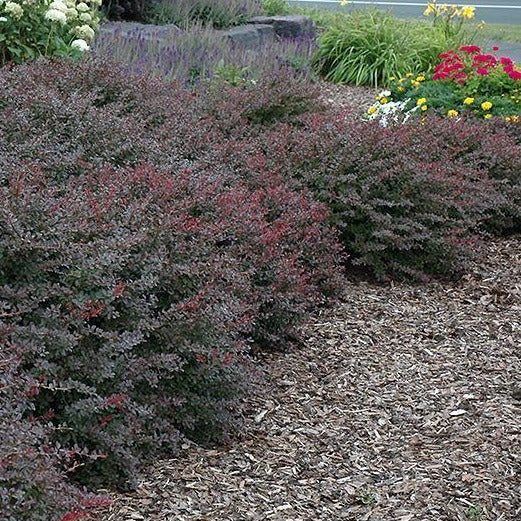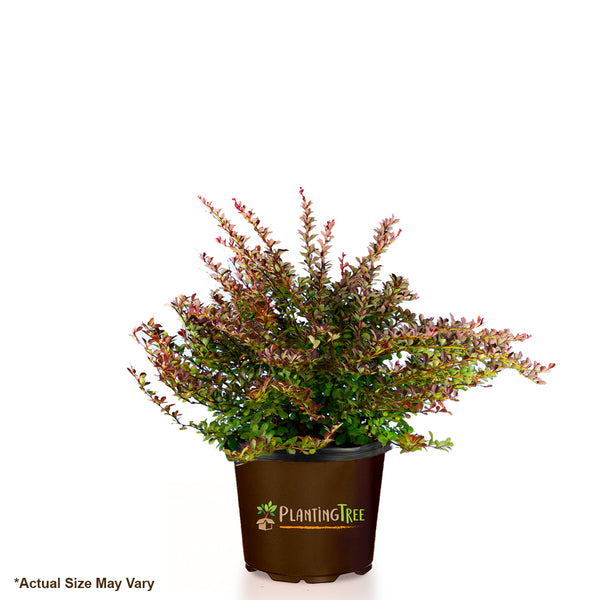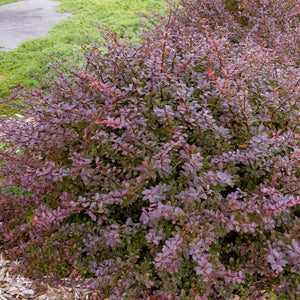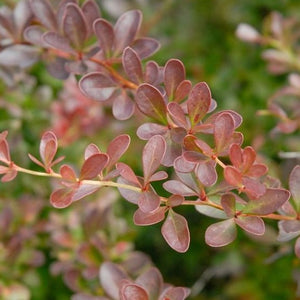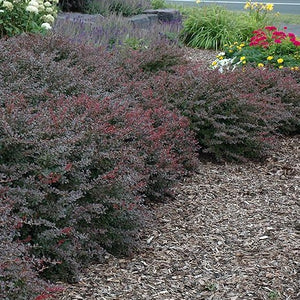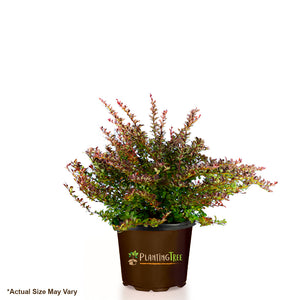Crimson Pygmy Barberry
Product Details
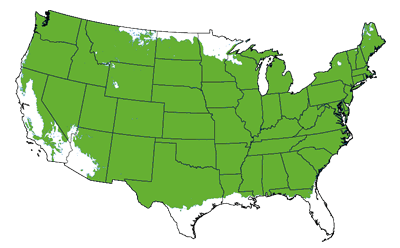 Growing Zones 4-8
Growing Zones 4-8
| Soil Type | Adaptable, Well Drained |
| Sunlight | Full, Partial |
| Drought Tolerance | Good |
| Mature Height | 2-3 Feet |
| Mature Width | 2-3 Feet |
| Growth Rate | moderate |
| Fall Color | Red |
| Shipping Restriction | AZ, IN, MA, MI, ND, NY, PA, WA, WV |
The Crimson Pygmy is a miniature version of the Japanese Barberry plant. You get the dwarf version of a bigger plant for those areas in your landscaping that need to be filled in and bordered!
The ruby-red foliage keeps its color all season long while adding pops of red when new growth starts to develop. Only reaching 2 feet in height with 3 feet spread, this plant is perfect for all those little spaces that need to be filled in.
The Crimson Pygmy Barberry has so much more to offer than just its natural red hue. The spring brings little yellow flowers that fade as fall adorns this barberry with scarlet orange berries.
The Crimson Barberry prefers full sun and dry soil. This plant is insect resistant, deer resistant, as well as pollution, salt, and drought tolerant. Well drained sand, or clay soil is recommended as well as an alkaline soil pH level.
The Crimson Pygmy Barberry is a versatile plant that can accommodate any of your landscaping needs.
When Should I Prune A Crimson Pygmy Barberry?
Winter is the best time to prune although touch up pruning may be done throughout the year if necessary.
Is This Barberry Invasive?
The Crimson Pygmy variety of the Barberry produces less seedlings and fruit making it less invasive than the wild version.
What Are Good Companion Plants For The Crimson Pygmy?
Nandina, daylily and ligustrum pair well with barberry in mixed beds and for color contrast.
Plant your Crimson Pygmy Barberry in full or part sun. These hardy shrubs are adaptable to just about any soil that drains well. After planting be sure to water deeply 1-2 times per week in order for the roots to grow properly. Once established this shrub is drought tolerant and extremely low maintenance. Watering is generally only needed in periods of extreme drought. Applying 2-3 inches of mulch will help protect the roots in extreme temperatures and keep the soil moist. There is no need to prune this shrub. However, if you prefer a manicured look, prune in winter. Fertilize with our balanced, slow release fertilizer in spring. This Barberry is salt, pollution, heat, and cold tolerant. It is also disease, pest(rabbit and deer) resistant.
There are many uses for dwarf barberries like the Crimson Pygmy Barberry. Plant in groups for a big punch of color, or you can use them as a border planting. When planting a border, space these barberries at least about 2 feet apart. They will grow together forming a small, colorful hedge. Use easy to grow barberries in mixed beds for fabulous color contrast and phenomenal texture.

